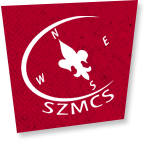You are here
History of Hungarian Scouting
The Beginnings of Hungarian Scouting
The Scout Movement found by Robert Baden-Powell in 1907 appeared in Hungary in 1910. The Hungarian Scout Association was established 28th December 1912. In 1914, Scouting had 3,000 members all over the country.
The Hungarian Soviet Republic banned Scouting, however, after its fall the Association was reorganized on September 1919.
In the 1920s and 1930s, Scouting has developed into a major youth movement. In 1922, Pál Teleki – the former prime minister – was elected Chief Scout. In 1926, the Association had 8,000 members. Hungary was a founder member of the World Organization of the Scout Movement (the International Scout Bureau, today WOSM) and also of the World Association of Girl Guides and Girl Scouts (WAGGGS) founded in 1928 in Parád.
The 4th World Scout Jamboree was organized in 1933 in Gödöllő, where 26,000 Scouts participated from 51 nations. The Scout Camp Leader was Pál Teleki. The first Girl Guide and Girl Scout World Camp under the name of Pax Ting was also held here in 1939. In 1938, the Movement had 50,000 members in Hungary.
After the Second World War, the Hungarian Communist Party tried to weaken the Scout Movement and to expropriate it for their own purposes. 20th July 1946 the Association´s operation was banned. Two days later, the Hungarian Boy Scout Association with a new (to the Communists much more favourable) management was established. In 1946, the new association was united with the Association of Hungarian Pioneers and the Scout Association´s property was nationalized.
Scouting from that time on could not operate officially in Hungary; however, many of the former Scouts took on the spirit of Scouting and illegally organized programmes for children, more or less based on the Scout method. Hungarian Scouting lived on in foreign exile, within the framework of the Hungarian Scout Association in Exteris.
After the regime change, in Hungary and the neighbouring countries Hungarian Scouting came to life again. The Metropolitan Court in 11th February 1989 registered the Hungarian Scout Association as the first social organization established.
Hungarian Scouting in the current territory of Slovakia
In 1910, Aladár Szilassy, Hungarian paediatrician living in the current territory of Slovakia initiated the formation of Scouting at the Reformed Association in Budapest. Therefore, he became one of the first leaders of the Hungarian Scout Movement. According to an article from the Zászlónk magazine written on 15th January 1913, Hungarian Scouting in Slovakia´s current territory started in 1913 – then within the framework of the Hungarian Scout Association. The author was a teacher named Kálmán Radványi, who caught the interest of all the then students in Komárno with his writing "Into the Camp, Boys!".
In Komárno in 1913, under the leadership of Sándor Karle, the first Scout Troop named Turul was formed. Its members participated on one of the most important event of the Hungarian Scout Movement – rafting the Váh River. After the Trianon Peace Treaty, the Scout Troops that wound up in Czechoslovakia got into a tight corner. To form an own Scout association was not allowed by the authorities. After 1926, they could join the Czechoslovakian Scout Association. It did not support them but at least they could operate legally.
After the political decisions made in the autumn of 1938, many Czechoslovak Scout Troops could continue to operate within the Hungarian Scout Association. The Executive Committee of the Hungarian Scout Association established two Scout Districts in the Highlands – one in Komárno and the other in Kosice. Scout Troops that found themselves in Slovakia could operate until 1941.
In 1945 in Czechoslovakia, the Scouting Movement revived but only Slavic troops could function and even those only until 1948. Here the members of the former Scout Troops were welcomed; they carried out valuable work as Scoutmasters. Scouts who stayed at home should choose whether they join a Slavic troop or hold meetings in secret. They had one more option – to remain silent. Czechoslovak Scouting has one more short but significant period. In 1968, they were reorganized and functioned for two years during the Prague Spring. This explains why there are so many middle-aged Scouts in the Czech Republic.
A lot of Hungarian Scouts who left the country re-joined Scouting abroad. Many of them continued to work in Hungarian Scout Troops established in 1946 (in refugee camps) – they were the founders of the Hungarian Scout Association in Exteris. Lajos Beszédes was one of them. There were also Scouts who did remarkable work in the host country´s Scout Associations.
After the years of hiding, the Hungarian Scout Association in Slovakia was reorganized on 11th March 1990. The Slovak Ministry of the Interior officially authorized them the same year, on 6th April.
You can find a detailed chronology here.


